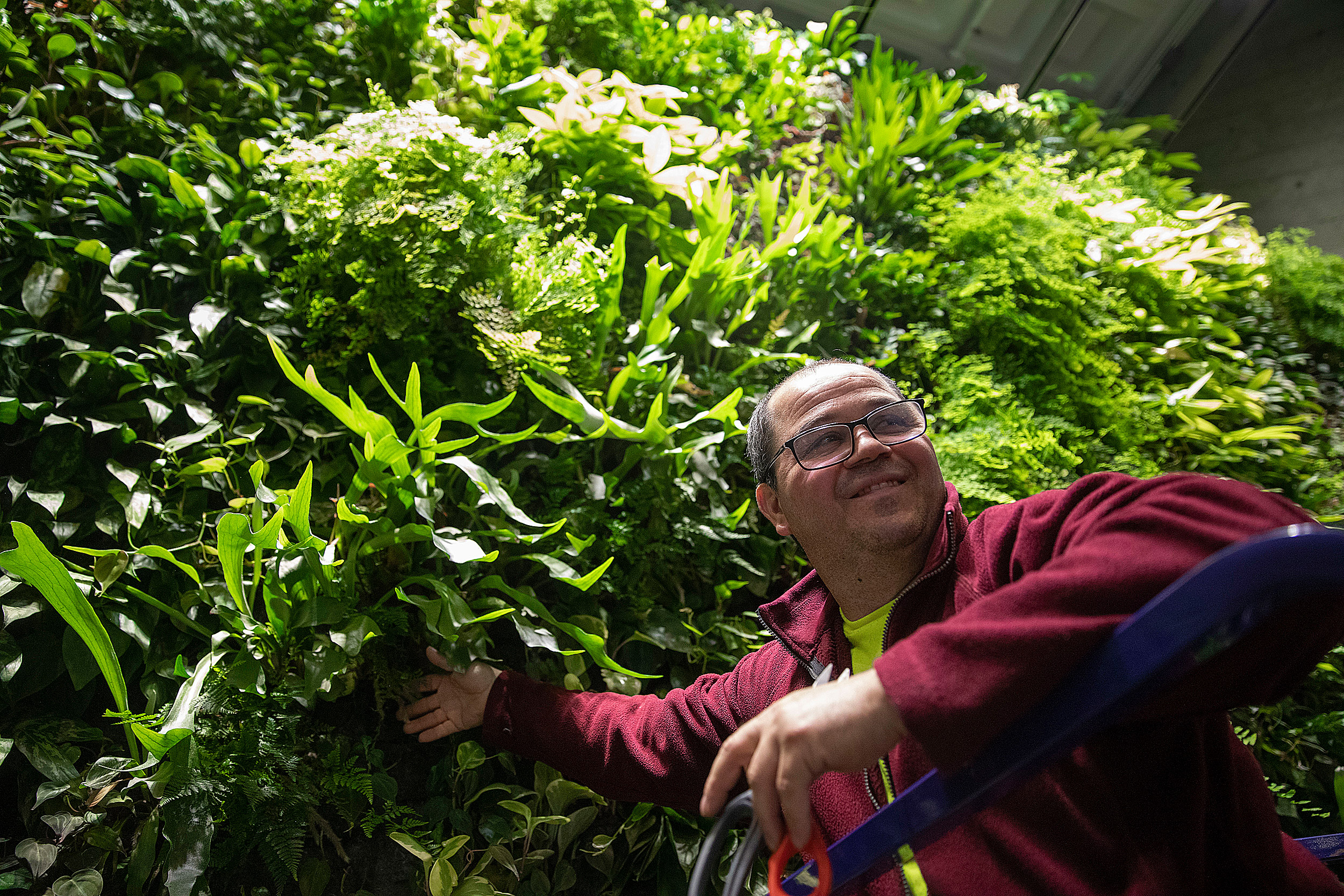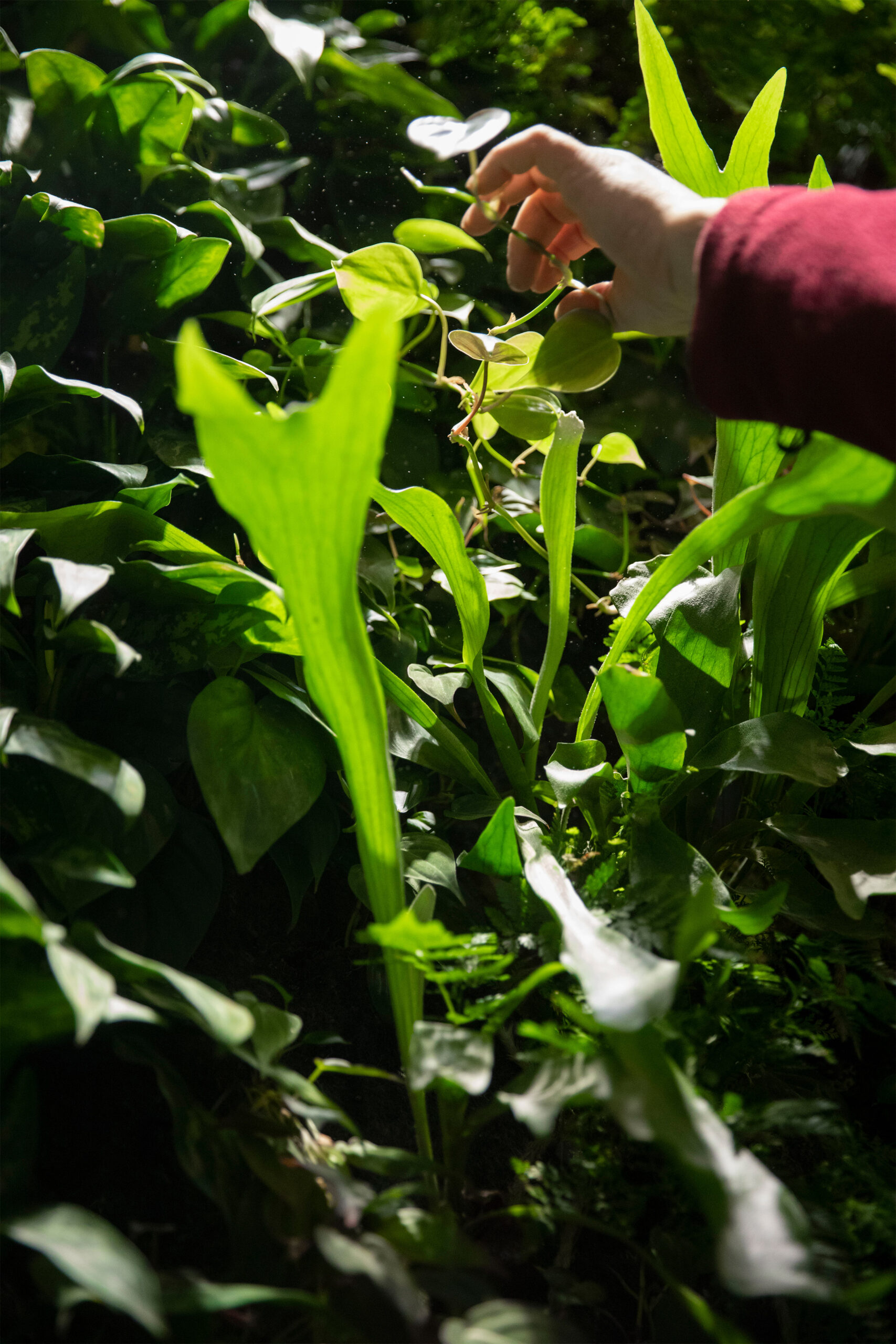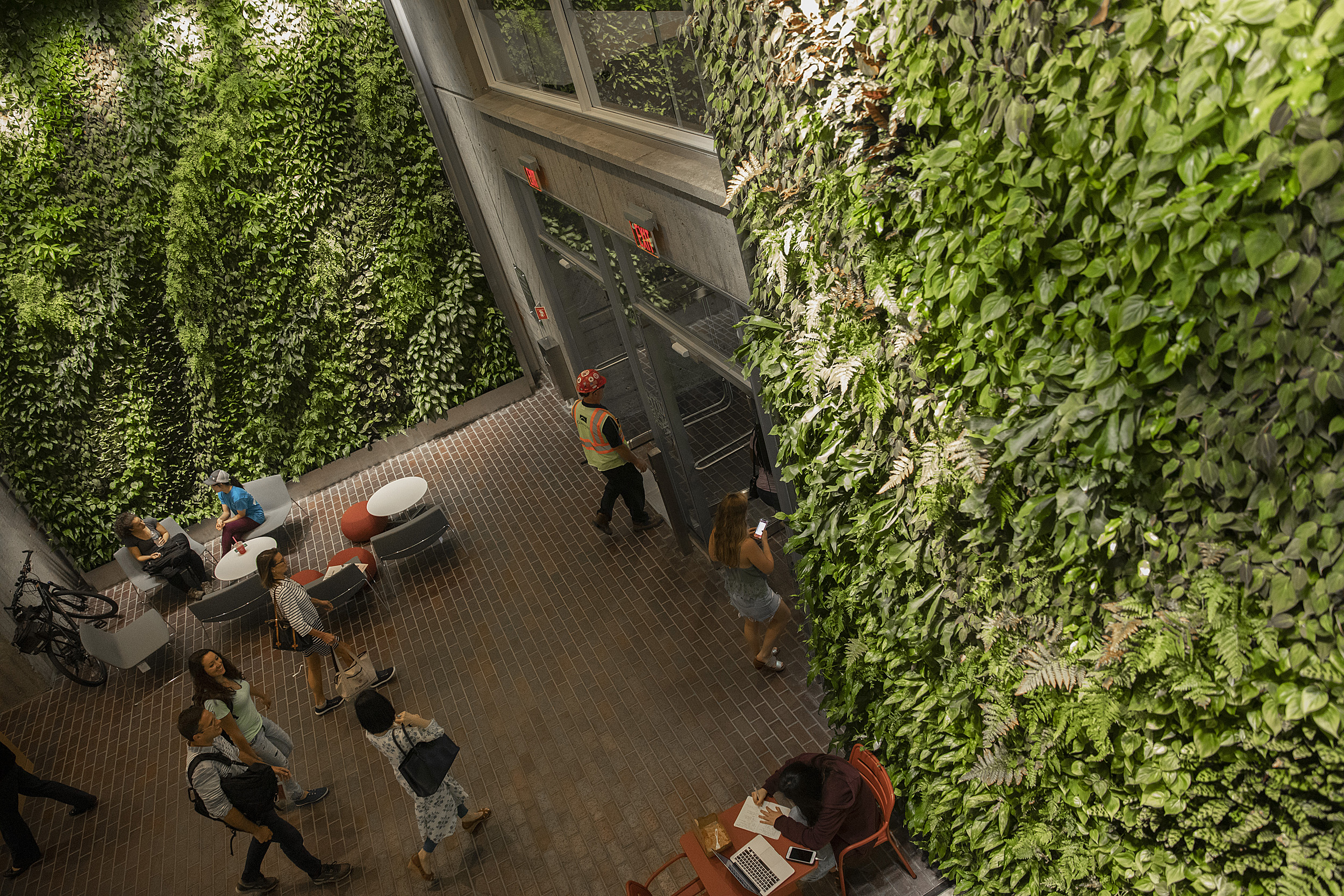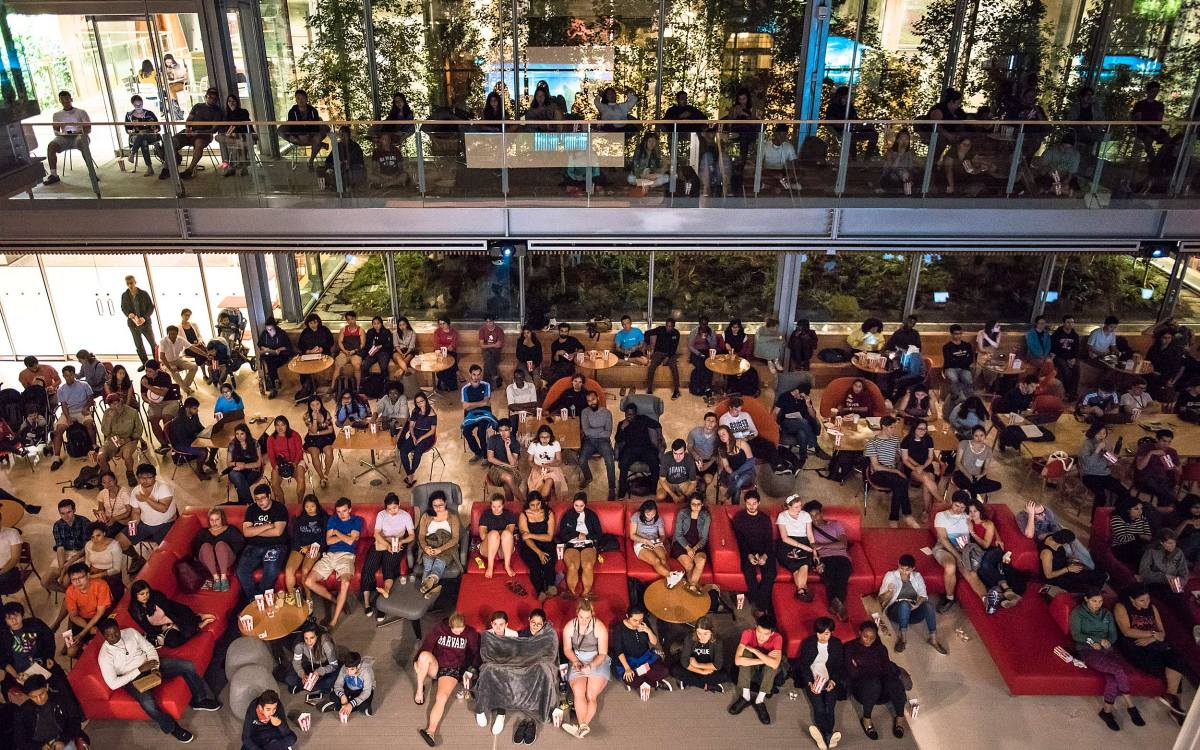
Tiago Pereira tends to one of many green walls in the arcade at the Smith Campus Center.
Photos by Kris Snibbe/Harvard Staff Photographer
They’re alive!
The Smith Center’s green walls bring beauty, cleaner air, and calm
In the winter, they are oases of green offering respite from the bitter January chill and serving as verdant reminders of warmer times to come. In summer, they’re lush connections to the outside world for those eager to cool off indoors.
They are the living walls at the Richard A. and Susan F. Smith Campus Center, eight organic interior designs — climbing, creeping arms of trees and blocks of ferns and other tropical plants — that are a welcome addition to Harvard’s newly configured social hub in any season. And they are under the meticulous care of Tiago Pereira, a longtime member of Harvard’s landscape team whose work, until recently, mostly took place outside.
On a recent morning, Pereira climbed onto a blue hydraulic lift in the Smith Center to start his day accompanied by two key tools of his trade: a pair of scissors and a keen eye for leaves in need of clipping. Slowly he surveyed the rectangular green web that includes ficus and money trees, maidenhair, rabbit’s foot, Japanese ferns, red maranta, and silver bay plants — just some of the 19 species of the more than 12,000 plants that comprise the arcade’s living walls.
“Sometimes,” said Pereira, as he carefully snipped a leaf here and trimmed a vine there, “I actually forget that I am inside.”
The installations, developed by New York–based plantwalldesign, are made of metal frames that have been covered with plastic squares and topped by two coats of felt. The plants are stapled into small pockets on the fabric’s outer layer, typically in a small amount of soil. As they grow, they abandon the dirt and slowly attach their roots instead to the material, which is soaked with nutrient-filled water — UV-filtered rainwater harvested from the center’s rooftop —three times a day from a series of pipes near the arcade’s ceiling.


The green walls require careful maintenance both by hand and by an irrigation system.
Pereira spends most of his workweek making sure the vertical gardens stay in top shape. The upkeep includes pruning, planting, and replanting. He also monitors the irrigation system and adjusts the lights at the top of the walls every few days to ensure each section of foliage is getting enough rays. Still, despite the daily attention and care, some plants don’t make it. “That frustrates, me” said Pereira, who does everything he can to ensure such losses are rare. Earlier this year when a cold snap froze one of the water pipes, he and a colleague grabbed a hose and a spray bottle and spent hours watering the affected wall by hand.
They also contend with living hazards. Pereira keeps a close watch out for critters that thrive in the moist, warm havens the green walls provide. Mealybugs are treated with a solution of water and organic castile soap. Slugs, the other pests eager to munch on Pereira’s careful work, are enticed by plastic cups hidden among the leaves that contain small amounts of beer. The brew, it turns out, is irresistible to the snails, who slip in and don’t slip out.
For Pereira, being in charge of a living interior is “kind of new.” But the work comes naturally to the native of Brazil, who was raised on a farm that harvested corn, rice, beans, and coffee. “We planted everything,” he said. “That’s what we did.”
Tending to crops in the field likely didn’t prepare him for his other Harvard role. Today, in addition to being the walls’ primary caretaker, he is also their agent, regularly responding to passersby eager to talk about his work. “I get questions all the time,” Pereira said.
Some people are curious about how the walls are watered or how they grow; others ask if a certain plant known for its psychoactive effects is part of the mix (it’s not). In testament to Pereira’s rigorous care, the main thing people want to know is: “Are they are real?”

Living, breathing gardens were always key feature for the architects, Harvard administrators, and members of Harvard’s Common Spaces— an initiative that promotes campus spaces devoted to engagement and community — who collaborated on the building’s new look and feel.
“We really wanted to think about how to bring the connections of the exterior to the interior but have it be a warm, welcoming place. Part of that was bringing natural light in, part of it was bringing the landscape in,” said Emily Mueller De Celis, a principal at Michael Van Valkenburgh Associates, the landscape architect for the building’s redesign, which was developed by the London firm Hopkins Architects. (The Cambridge-based firm Bruner/Cott served as executive architect.)
The green walls aren’t simply an attractive flourish. In addition to encouraging people to stop, sit, and connect, they help purify the air by consuming carbon dioxide and releasing oxygen; they improve the arcade’s acoustics by absorbing sound, and they can even help put visitors in a better mood. Over the years research has demonstrated a link between people’s access to nature or green space and their emotional well-being.
Incorporating organic elements was central to transforming the entryway of the structure, designed by the famed Spanish architect Josep Lluís Sert, into a place where people would want to linger. Sert, dean of the Harvard Graduate School of Design from 1953 to 1969, envisioned a vibrant “boulevard” on the ground floor of the 10-story building, then called the Holyoke Center, that would act as an extension of the bustling Harvard Square streetscape. But his dream was hampered in large part by the area’s narrow footprint. Today, the expanded space has enhanced Sert’s original concept, offering pedestrians and those in search of a coffee, a snack, or a place to study or chat a range of inviting options enhanced by the presence of the 18-foot-tall living walls, as well as an open-air atrium.
The building’s interior landscape embraces Sert’s initial impulse, “this blurring of the inside and the outside,” said De Celis.
Despite the necessary pruning, the plan is to let the walls grow. The ferns will continue to cascade down, said Pereira, and the trees near the top will extend out by about three feet. In five or six years, he said, “these walls will look totally different.”






